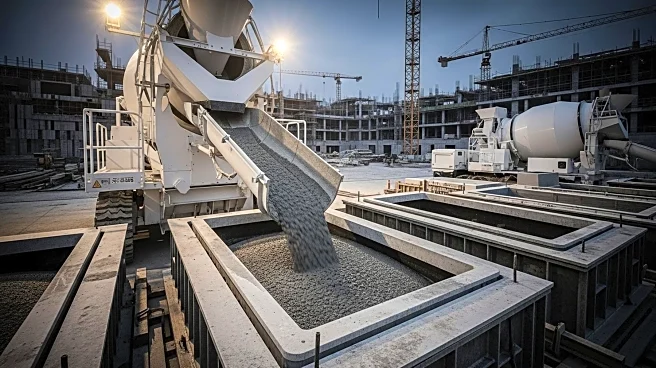What is the story about?
What's Happening?
The U.S. self-compacting concrete market is experiencing significant growth, with projections indicating an increase from $12.1 billion in 2022 to $19.8 billion by 2031. This growth is driven by rising demand in residential construction and innovative strategies by leading companies such as Heidelberg Cement, BASF, and CEMEX Group. The market is expected to expand at a CAGR of 6.3% between 2025 and 2032, with North America and Asia-Pacific leading the way. The report by DataM Intelligence highlights key growth factors, including technological advancements and increased adoption in construction projects.
Why It's Important?
The expansion of the self-compacting concrete market reflects broader trends in the construction industry, where efficiency and sustainability are increasingly prioritized. Self-compacting concrete offers advantages such as reduced labor costs and improved structural integrity, making it attractive for large-scale projects. The growth of this market could lead to increased investment in construction technologies and materials, influencing industry standards and practices. Companies involved in this sector may benefit from enhanced market opportunities and competitive positioning.
What's Next?
As the market continues to grow, stakeholders can expect further innovations in concrete technology and applications. Companies may focus on expanding their product lines and enhancing sustainability features to meet evolving consumer demands. Regulatory changes and infrastructure investments could also impact market dynamics, providing new opportunities for growth and collaboration.
Beyond the Headlines
The rise of self-compacting concrete highlights the importance of material innovation in addressing construction challenges. This trend may lead to increased research and development efforts, fostering collaboration between industry players and academic institutions. The focus on sustainability and efficiency could drive long-term shifts in construction practices, influencing urban development and environmental policies.
AI Generated Content
Do you find this article useful?













